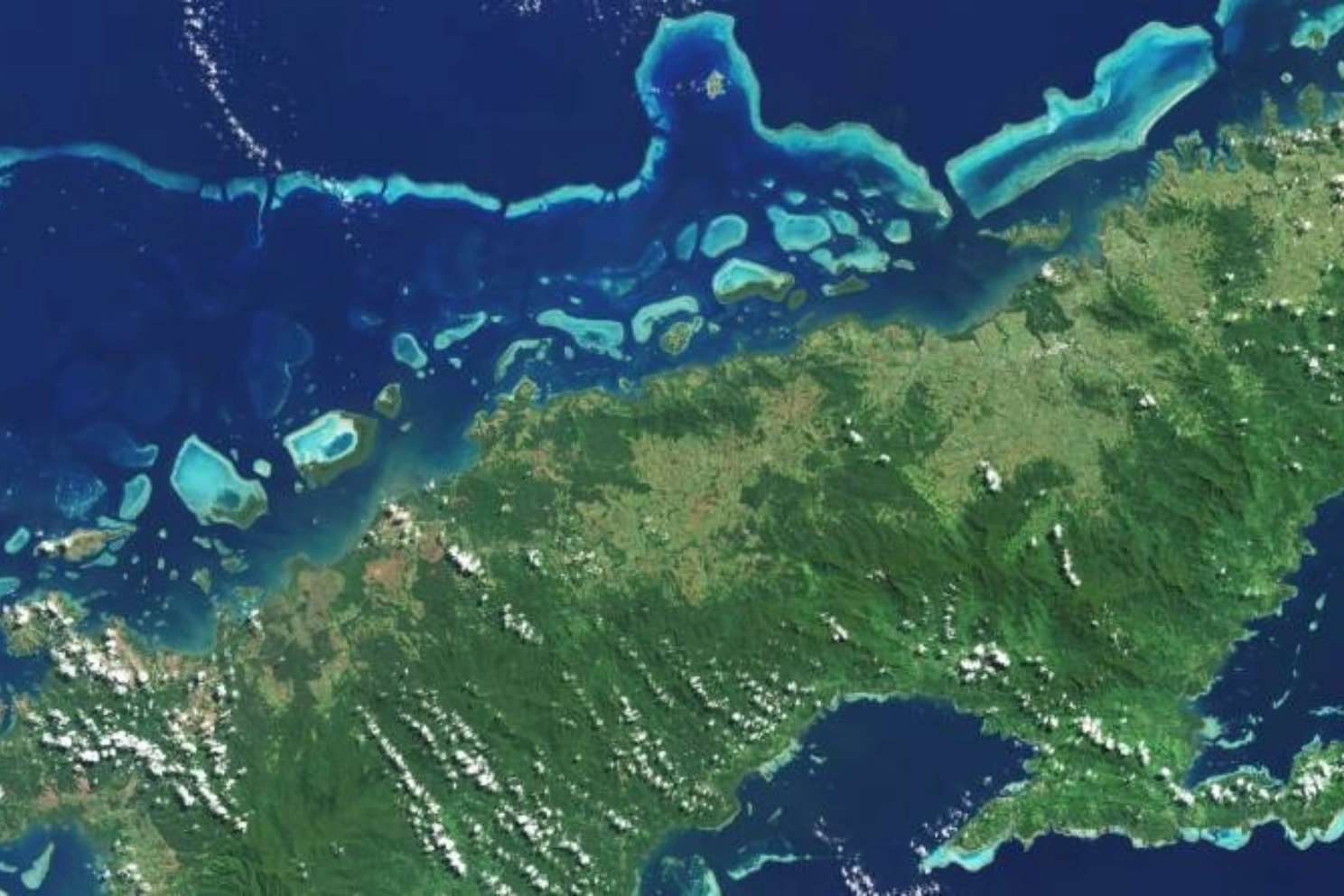Different lives, shared experience
Natives of Greenland and the Pacific lead different lives, but have one thing in common. Both communities are strongly affected by climate change.
Publisert 05. July 2022
Written by Ellen Viste

The indigenous population of Greenland and low-lying islands in the Pacific face an ocean of change. Here, the coast of Fiji. Image: NASA Earth Observatory.
As Greenland's glaciers and sea ice withdraw, fjords open up, and new land is formed. On low-lying islands in the Pacific, land disappears as the ocean rises.
Getting an overview of the risk posed by climate change requires collaboration across disciplines and national borders.
"This is radically interdisciplinary", says Kerim H. Nisancioglu.
With the new project Climate Narratives, the research leader from the Bjerknes Centre and professor at the Department of Earth Science at the University of Bergen connects glaciers in Greenland, fisheries in the fjords, heat transport in the Atlantic and rising sea levels in Fiji.
The team includes natural as well as social scientists and artists from the University of Bergen. Through an art perspective, they would like to capture the stories of people living with climate change.
Eamon O'Kane, professor at the Faculty of Fine Art, Music and Design at the University of Bergen, leads the project's art program. He aims for exhibitions in both Fiji and Greenland.

Kerim H. Nisancioglu and Eamon O’Kane will explore the effects of climate change through collaboration with artists in Greenland and Fiji. Photo: Ellen Viste
Compiling climate stories
Can climate stories be part of the solution for the present challenges posed by the changing climate?
Behind all the topics treated in the project lies the vulnerability of indigenous communities at the coast of Greenland, Fiji and the Cook Islands. For people living this close to nature and the ocean, climate change creates problems, but also possibilities, provided they have the knowledge to take advantage of the changes.
Climate Narratives unites biologists, oceanographers, anthropologists and artists. The mutual exchange of knowledge is central. The researchers will build on the experience of the local people in Greenland and on low-lying Pacific islands.
"We will learn from those already living with climate change", says Kerim H. Nisancioglu.
An important part of the work will be to map risks and vulnerability, while also considering the opportunity for adaption and innovation in both regions. Local artists will be involved.